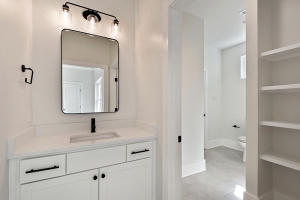According to the National Association of Home Builders (NAHB) Home Building Geography Index (HBGI) we are seeing a change in the locations of single-family home builds. The building activity in the last 30 months shows a decrease in building in metro areas, largely due to COVID, housing affordability and highly regulated markets.

“The geography of home building has shifted over the last two and a half years, with more single-family and multifamily construction occurring in lower-density markets. This shift was first caused by the initial impact of COVID shift continued in recent months due to housing affordability conditions that are causing both prospective renters and buyers to expand their geographic search for housing, aided by hybrid work patterns that allow for a combination of remote office work,” said NAHB Chief Economist Robert Dietz.
Another wrench in the system is the problem with getting building materials, construction labor shortages and and the Federal Reserve’s stingent monetary policy. “Looking at the last 12 months, single-family production has slowed in all regional submarkets, both large and small, due to ongoing building material production bottlenecks, construction labor shortages, and the Federal Reserve’s tigtening monetary policy,” said NAHB Chairman Jerry Konter, a home builder and developer from Savannah, Georgia.
The National Association of Home Builders Home Buidling Geography Index (HGBI) is a quartley measurement of building conditions across the country and uses county-level information about single-and-multifamily permits to gauge housing construction growth in various urban and rural geographies. The National Association of Home Builders tracks single-family and multifamily grow rates and market shares in all seven regions of the U.S. The HGBI takes the place of the of the Leading Market Index (LMI). The LMI would base their findings off single-family housing permits, employment, and home prices.
Currently it is report that the market share for single-family home builiding in large metro core and inner suburbs too a dive from 44.5% to 41.6% from the fourth quarter of 2019 to the second quarter of 2022. This shows the precovid vs postcovid figures, accounting for the results due to COVID. In the outer suburbs of large and medium metro areas has jumped up from 17.4% to 19% during the same time period as the decrease in the larger areas. The share also increased from 28.8% to 29% in the small metro core counties and in rural areas it rose from 9.4% to 10.4% This is mainly due to homebuyers wanting to move away from the dense areas during COVID.
No comments:
Post a Comment